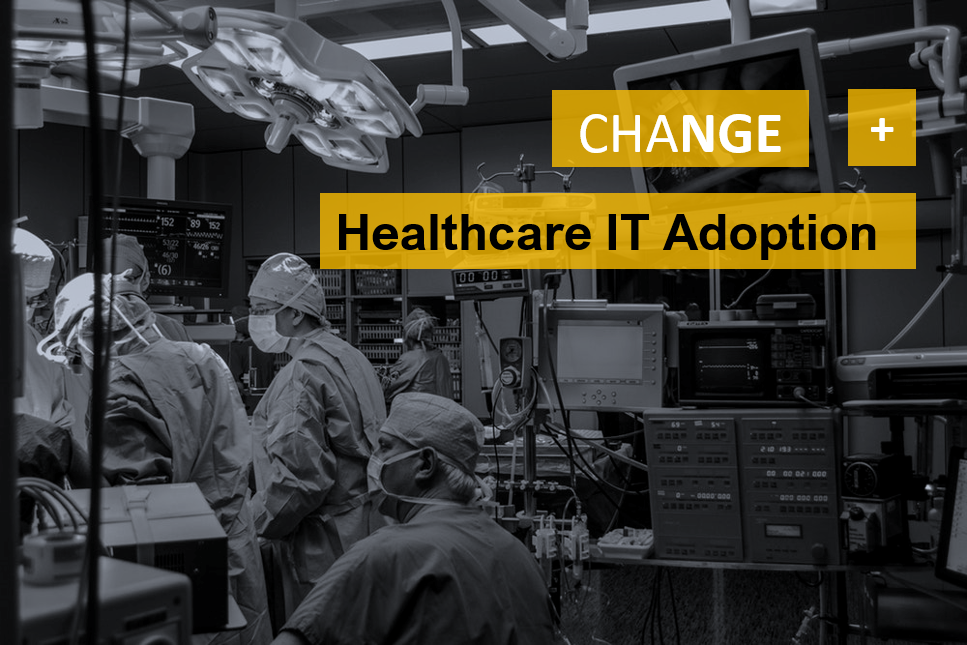Sign Up
Sign In
Blog

2019-03-04 09:01:56 Ricky Arredondo, IT & Healthcare Industry Change Management Expert
Reform-driven “disruptions” or changes continue to impact healthcare’s transparency and cost-control efforts. Both transparency and cost-control efforts support IT spending, smarter analytics, and expansion of products and service lines beyond traditional partnership models. Both are also a catalyst for consolidation of operations and initiatives to transform hospitals into new delivery models focused on leveraging the hospital’s IT tools and investments. In an effort to address these challenges, healthcare entities are embracing Change Management as the tool to enable the required paradigm shifts.
The management of back-office business process changes, with the focus on cost cutting and quality, is pushing healthcare organizations to not just increase their IT spend, but to focus on its adoption to achieve the promised outcomes. As information chaos continues to overwhelm healthcare organizations, the focus continues to center on how to lower costs and increase quality (outcomes). Among the many issues being faced are those with data integration, physician alignment, risk sharing, information mobility and security, and leveraging lower-skilled clinical personnel and technology to achieve healthcare entities’ quality outcome and efficient costs management.
The reality is that Change Management, properly implemented and aligned with technology, leads to reduced spend and alignment with higher levels of IT, tools and BI uses for strategic initiatives.
HIMSS has defined Change Management for healthcare as “…process, approach and set of tools for managing the people side of change so that business results are achieved, on time, and within budget – combines project management and human behavior.” Gartner says that if implementing an ERP system you should budget between 14% and 17% of your total budget for Change Management.[1] [2]
Change Management addresses the cultural changes that are essential throughout the life of any healthcare IT project. Change Management should begin at the onset of strategy development and continue throughout implementation. Change Management and communication can make the difference between the successful acceptance or the rejection of new processes and supporting technology.
Considerations
Change Management Implementation approaches should address key processes and tasks to help achieve business improvements, technical services including ERP/Cloud implementations, applications upgrades, and operational process redesign utilizing Process Improvement methodologies.
Change Management costs should provide return like any other business investment
Creating Tangible Outcomes: Alignment results from agreement about the value, timing, methods of implementation and consistently effective communications from all levels of management.
Change Management can either be insurance or an accelerator of return on your project investment. Successful cultural change requires that the methods, techniques, strategy and implementation tactics be tailored to the particular history, culture, and personalities of Healthcare’s organization. Thus, prior to defining a Change Management strategy, understand the organization’s culture in terms of readiness and capability for change.
Using the knowledge gained in this analysis, develop a Change Management strategy customized for both the healthcare organization and the IT project’s business outcomes. The Change Management strategy defines the change and communication activities required to move the organization from project start-up through implementation. The Change Management strategy is aligned with the implementation plan to ensure communications are delivered in conjunction with project milestones.
Essentials: A Change Management Strategy should include:
Following the approval of the Change Management Strategy, develop a Change Management Plan to provide tasks, actions, and details of the required materials to be developed to meet communications needs, as well as the schedule/logistics for communications.
The Change Management Plan should define members of each of the target audiences who will be affected by the change. Keeping in mind that distinct target audiences may have different information requirements, the Change Management Plan should be revised as the implementation project progresses based upon the specific needs of the target audience and the communication objective for that target audience.
Throughout the delivery of Change Management, communication methods should be evaluated at various stages to better guarantee the most effective delivery of information – in reference to content and delivery mechanism. Two-way communication allows information to flow to target audiences and for target audiences to provide feedback to the Change team, providing stakeholder involvement and enabling program changes to ensure communication effectiveness. Constant feedback can allow the project to manage and mitigate unexpected problems. Frequent assessments of the communicated messages should be made to measure their effectiveness when they reach the targeted audiences. As the cultural changes are addressed, the healthcare organization becomes aware of the unique needs of each target product or service line audience; these needs should be documented and incorporated into future communication efforts.
As is inherent in every healthcare IT project, knowledge transfer must be a focus, so provide the Change team with some development and delivery of change tools and techniques to enable the healthcare organization to manage change on a go-forward basis.
Sample Change Management Approach
Begin all new healthcare IT projects by determining what processes are currently in place, what requirements the new system must meet, and how these existing processes and requirements will be replaced and met, respectively, by the new system.
Refine the Change Management approach from a Business Process Re-engineering (BPR) methodology to address the following points to draw out the core tasks that must be completed with a clear focus on the healthcare organization’s primary “business” objectives. These issues allow the business owners of the product and service lines to hit the ground running while addressing the mission critical goals and strategies of the healthcare organization.
For more information on change management or to discuss your needs you’re invited to start a conversation with us about effective organizational change practices and find out how The Change Shop™ can help your team build the change capabilities your organization needs.
Sources:
[1]“Management Engineering & Process Improvement Community”, Cynthia Hartmann, MBA, CPHIMS, Six Sigma Lean Black Belt, Committee Chair, October 3, 2014
[2]“Toolkit Tutorial: How to Avoid the Top Three ERP Implementation Mistakes”, Pat Phelan
This article was originally posted on Sierra-Cedar’s blog
0
Comments